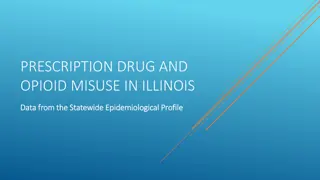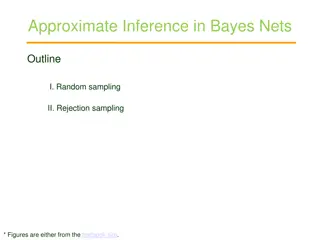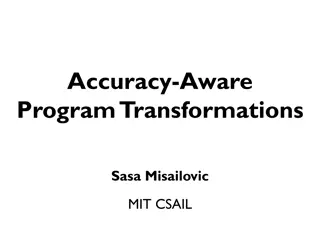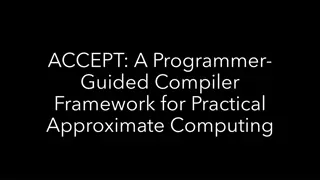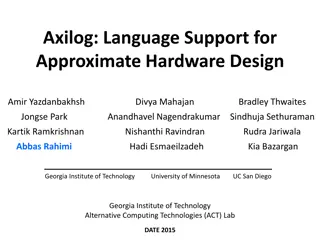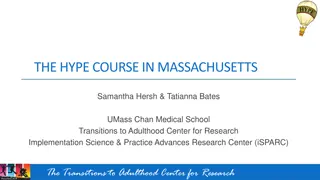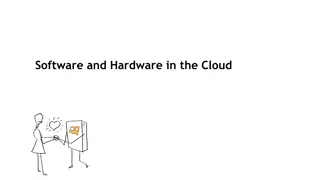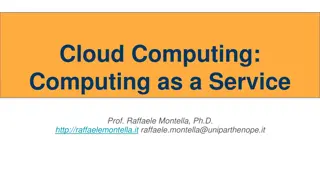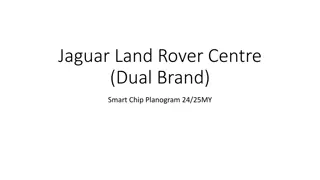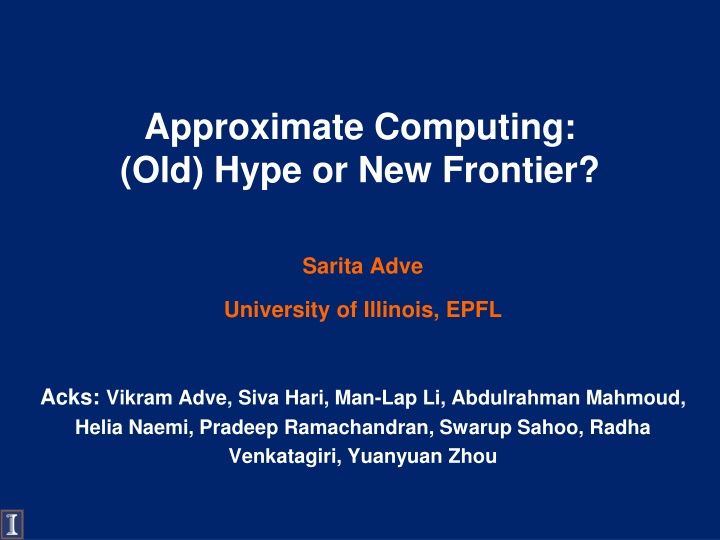
Approximate Computing: Hype or New Frontier? Sarita Adve, University of Illinois, EPFL
"Explore the potential of approximate computing through insights from leading experts at University of Illinois and EPFL. Delve into the debate surrounding its promises and challenges, with contributions from a diverse team of researchers and scholars. Gain a deeper understanding of this emerging field and its implications for future computing advancements."
Download Presentation

Please find below an Image/Link to download the presentation.
The content on the website is provided AS IS for your information and personal use only. It may not be sold, licensed, or shared on other websites without obtaining consent from the author. If you encounter any issues during the download, it is possible that the publisher has removed the file from their server.
You are allowed to download the files provided on this website for personal or commercial use, subject to the condition that they are used lawfully. All files are the property of their respective owners.
The content on the website is provided AS IS for your information and personal use only. It may not be sold, licensed, or shared on other websites without obtaining consent from the author.
E N D
Presentation Transcript
Approximate Computing: (Old) Hype or New Frontier? Sarita Adve University of Illinois, EPFL Acks: Vikram Adve, Siva Hari, Man-Lap Li, Abdulrahman Mahmoud, Helia Naemi, Pradeep Ramachandran, Swarup Sahoo, Radha Venkatagiri, Yuanyuan Zhou
What is Approximate Computing? Trading output quality for resource management? Exploiting applications inherent ability to tolerate errors? Old? GRACE [2000-05] rsim.cs.illinois.edu/grace SWAT [2006- ] rsim.cs.illinois.edu/swat Many others Or something new? Approximate computing through the lens of hardware resiliency 2
Motivation Overhead (perf., power, area) Redundancy Goal: High reliability at low-cost Reliability 3
SWAT: A Low-Cost Reliability Solution Need handle only hardware faults that affect software Watch for software anomalies (symptoms) Zero to low overhead always-on monitors Diagnose cause after anomaly detected and recover May incur high overhead, but invoked infrequently SWAT: SoftWare Anomaly Treatment 4
SWAT Framework Components Detection: Monitor symptoms of software misbehavior Diagnosis: Rollback/replay on multicore Recovery: Checkpoint/rollback or app-specific action on acceptable errors Repair/reconfiguration: Redundant, reconfigurable hardware Flexible control through firmware Checkpoint Checkpoint Fault Error Anomaly detected Recovery Diagnosis Repair 5
SWAT Framework Components Detection: Monitor symptoms of software misbehavior Diagnosis: Rollback/replay on multicore Recovery: Checkpoint/rollback or app-specific action on acceptable errors Repair/reconfiguration: Redundant, reconfigurable hardware Flexible control through firmware Checkpoint Checkpoint How to bound silent (escaped) errors? When is an error acceptable (at some utility) or unacceptable? How to trade silent errors with resources? Fault Error How to associate recovery actions with errors? Anomaly detected Recovery Diagnosis Repair 6
Advantages of SWAT Handles only errors that matter Oblivious to masked error, low-level failure modes, software-tolerated errors Low, amortized overheads Optimize for common case, exploit software reliability solutions Customizable and flexible Firmware control can adapt to specific reliability needs Holistic systems view enables novel solutions Software-centric synergistic detection, diagnosis, recovery solutions Beyond hardware reliability Long term goal: unified system (HW+SW) reliability Systematic trade off between resource usage, quality, reliability 7
SWAT Contributions (for in-core hw faults) Fault Detection Very low cost detectors [ASPLOS 08, DSN 08] Bound silent errors [ASPLOS 12, DSN 12] Identify error outcomes: Relyzer, GangES [ISCA 14] Fault Recovery Handling I/O [TACO 15] Chkpt Chkpt Fault Error Symptom detected Recovery Diagnosis Repair Error modeling SWAT-Sim [HPCA 09] FPGA-based [DATE 12] In-situ Diagnosis [DSN 08] Trace-based arch diagnosis mSWAT [MICRO 09] Multicore detection & diagnosis Complete solution for in-core faults, evaluated for variety of workloads 8
SWAT Fault Detection Simple monitors observe anomalous SW behavior [ASPLOS 08, MICRO 09] Out of Bounds Fatal Traps Hangs Kernel Panic High OS App Abort Division by zero, RED state, etc. Simple HW hang detector OS enters panic state due to fault High contiguous OS activity App abort due to fault Flag illegal addresses SWAT firmware Very low hardware area, performance overhead 9
Evaluating SWAT Detectors So Far Full-system simulation with out-of-order processor Simics functional + GEMS timing simulator Single core, multicore, distributed client-server Apps: Multimedia, I/O intensive, & compute intensive Errors injected at different points in app execution arch-level error injections (single error model) Stuck-at, transient errors in latches of 8 arch units ~48,000 total errors 10
Error Outcomes Transient error APPLICATION . . . APPLICATION . . . APPLICATION . . . Symptom Output Output Output Output Symptom detectors (SWAT): Fatal traps, kernel panic, etc. Detection Silent Data Corruption (SDC) Masked Acceptable Unacceptable (w/ some quality) 11
SWAT SDC Rates 0.1% 0.1% 0.2% 0.2% 0.3% 0.5% 100% 80% Total injections 60% 40% 20% 0% SPEC SPEC Server Media Server Media Permanents Transients Masked Detected App-Tolerated SDC SWAT detectors effective <0.2% of injected arch errors give unacceptable SDCs (109/48,000 total) BUT hard to sell empirically validated, rarely incorrect systems 12
Challenges Goals: Full reliability at low-cost Redundancy Overhead (perf., power, area) Accurate reliability evaluation Tunable reliability vs. quality vs. overhead How? Very high reliability at low-cost Tunable reliability SWAT Reliability 13
Research Strategy Towards an Application Resiliency Profile For a given instruction what is the outcome of an error? For now, focus on a transient error in single bit of register Convert SDCs into (low-cost) detections for full reliability and quality OR let some acceptable or unacceptable SDCs escape Quantitative tuning of reliability vs. overhead vs. quality 14
Challenges and Approach Determine error outcomes for all application-sites How? Impractical, too many injections >1,000 compute-years for one app APPLICATION . . Complete app resiliency evaluation Challenge: Analyze all errors with few injections Output Cost-effectively convert (some) SDCs to Detections SDC-causing error How? APPLICATION . . APPLICATION . Error Detection Challenges: What to use? Where to place? How to tune? Error Detectors Output 15
Relyzer: Application Resiliency Analyzer [ASPLOS12] Equivalence Classes Pilots Relyzer Prune error sites . . APPLICATION . . APPLICATION . Application-level error (outcome) equivalence Predict error outcome if possible Output Output Inject errors for remaining sites Can list virtually all SDC-causing instructions 16
Def to First-Use Equivalence Fault in first use is equivalent to fault in def prune def r1 = r2 + r3 Def r4 = r1 + r5 First use If there is no first use, then def is dead prune def 17
Control Flow Equivalence Insight: Errors flowing through similar control paths may behave similarly CFG X Errors in X that take path behave similarly Heuristic: Use direction of next 5 branches 18
Store Equivalence Insight: Errors in stores may be similar if stored values are used similarly Heuristic to determine similar use of values: Same number of loads use the value Loads are from same PCs PC PC1 Load PC2 Load Store Instance 1 Memory Instance 2 Store PC Load Load PC2 PC1 19
Relyzer Relyzer: A tool for complete application resiliency analysis Employs systematic error pruning using static & dynamic analysis Currently lists outcomes of masked, detection, SDC APPLICATION . . APPLICATION . . Relyzer Output Output 3 to 6 orders of magnitude fewer error injections for most apps 99.78% error sites pruned, only 0.004% sites represent 99% of all sites GangES speeds up error simulations even further [ISCA 14] Can identify virtually all SDC causing error sites What about unacceptable vs. acceptable SDC? Ongoing 20
Can Relyzer Predict if SDC is Acceptable? Equivalence Classes Pilots Pilot = Acceptable SDC All faults in class = Acceptable SDCs ??? Pilot = Acceptable SDC with quality Q All faults in class = Acceptable SDCs with quality Q ??? 21
PRELIMINARY Results for Utility Validation Pilot = Acceptable SDC with quality Q All faults in class = Acceptable SDCs with quality Q ??? Studied several quality metrics E.g., E = abs(percentage average relative error in output components), capped to 100% Q = 100 - E (> 100% error gives Q=0, 1% gives Q=99) 22
Research Strategy Towards an Application Resiliency Profile For a given instruction what is the outcome of a fault? For now, focus on a transient fault in single bit of register Convert SDCs into (low-cost) detections for full reliability and quality OR let some acceptable or unacceptable SDCs escape Quantitative tuning of reliability vs. overhead vs. quality 23
SDCs Detections [DSN12] What to protect? - SDC-causing fault sites Low-cost detectors Many errors propagate to few program values Where to place? How to Protect? What detectors? Program-level properties tests Uncovered fault-sites? Selective instruction-level duplication 24
Insights for Program-level Detectors Goal: Identify where to place the detectors and what detectors to use Placement of detectors (where) Many errors propagate to few program values End of loops and function calls Detectors (what) Test program-level properties E.g., comparing similar computations and checking value equality 25
Loop Incrementalization ASM Code C Code A = base addr. of a B = base addr. of b Array a, b; For (i=0 to n) { . . . a[i] = b[i] + a[i] . . . } L: load r1 [A] . . . load r2 [B] . . . store r3 [A] . . . add A = A + 0x8 add B = B + 0x8 add i = i + 1 branch (i<n) L 26
Loop Incrementalization ASM Code C Code A = base addr. of a B = base addr. of b Array a, b; For (i=0 to n) { . . . a[i] = b[i] + a[i] . . . } Collect initial values of A, B, and i L: load r1 [A] . . . load r2 [B] . . . store r3 [A] . . . add A = A + 0x8 add B = B + 0x8 add i = i + 1 branch (i<n) L SDC-hot app sites What: Property checks on A, B, and i Where: Errors from all iterations propagate here in few quantities Diff in A = Diff in B Diff in A = 8 Diff in i No loss in coverage - lossless 27
Registers with Long Life Some long lived registers are prone to SDCs R1 definition For detection Copy Duplicate the register value at its definition Use 1 Compare its value at the end of its life Life time Use 2 ... Compare No loss in coverage - lossless Use n 28
Converting SDCs to Detections: Results Discovered common program properties around most SDC-causing sites Devised low-cost program-level detectors Average SDC reduction of 84% Average cost of 10% New detectors + selective duplication = Tunable resiliency at low-cost Found near optimal detectors for any SDC target Overhead SDC reduction 29
Identifying Near Optimal Detectors: Nave Approach Example: Target SDC coverage = 60% Overhead = 10% SDC coverage 50% SFI Sample 1 Overhead = 20% Bag of detectors 65% SFI Sample 2 Tedious and time consuming 30
Identifying Near Optimal Detectors: Our Approach 1. Set attributes, enabled by Relyzer 2. Dynamic programming Constraint: Total SDC covg. 60% Objective: Minimize overhead Detector SDC Covg.= X% Overhead = Y% Selected Detectors Bag of detectors Overhead = 9% Obtained SDC coverage vs. Performance trade-off curves [DSN 12] 31
SDC Reduction vs. Overhead Trade-off Curve 60% Pure Redundancy (For Relyzer identified SDCs) Our detectors + Redundancy 50% Execution Overhead 40% 24% 30% 18% 20% 10% 90% 99% 0% 0% 10% 20% 30% 40% 50% 60% 70% 80% 90% 100% SDC Reduction Consistently better over pure instruction-level duplication (w/ Relyzer) But overhead still significant for very high resilience Remove protection overhead for acceptable (bounded) quality loss? 32
Understanding Quality Outcomes with Relyzer (Prelim Results) Promising potential, but quality metric and application dependent Can use to quantitatively tune quality vs. reliability vs. resources 33
Quality Outcomes An Instruction-Centric View Systems operate at higher granularity than error sites: Instruction? When is an instruction approximable? Which errors in instruction should result in acceptable outcome? All? Single-bit errors in all register bits? Single-bit errors in subset of bits? When is an outcome acceptable? Best case : all errors that are masked or produce SDCs are acceptable 34
So - (Old) Hype or New Frontier? SWAT inherently implies quality/reliability relaxation aka approx. computing Key: Bound quality/reliability loss? (Subject to resource constraint) Can serve as enabler for widespread adoption of resilience approach Especially if automated Some other open questions Instruction vs. data-centric? Resiliency profiles and analysis at higher granularity? How to compose? Impact on recovery? Other fault models? Software doesn t ship with 100% test coverage, why should hardware? 35
Summary SWAT symptom detectors: <0.2% SDCs at near-zero cost Relyzer: Systematically find remaining SDC-causing app-sites Convert SDCs to detections with program-level detectors Overhead (perf., power, area) Tunable reliability vs. overhead Ongoing: Add tunable quality, Relyzer validations promising Very high reliability at low-cost Tunable reliability SWAT Reliability 36






